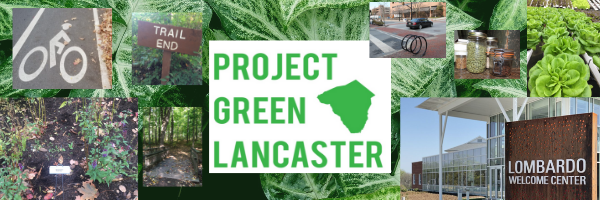by Kayla Rishell
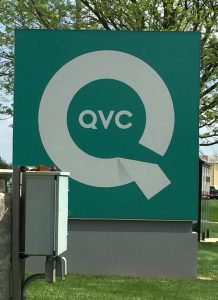
Photo by Kayla Rishell
QVC Aims for Sustainability Improvements in Coming Years.
Quality. Value. Convenience. QVC is an American broadcast, cable, and satellite television network out of West Chester, Pennsylvania. By combining retail, media, and social they are able to develop an appealing shopping experience for their customers. They offer a collection of familiar brands and fresh new products, from home and fashion to beauty, electronics and jewelry.
QVC broadcasts to more than 360 million people in nine countries and counting:
- QVC US
- QVC Germany
- QVC UK
- QVC Japan
- QVC Italy
- QVC France
- QVC China
In the US, QVC has a live broadcast operating 24 hours a day and 364 days of the year. QVC has been known as a channel that specializes in televised home shopping for almost 32 years.
The global growth of the company is equally impressive. QVC is an $8.7 billion dollar business. Nationwide, QVC draws in customers via 15 television channels reaching, seven websites that obtained over 1 billion visits in 2016, and 195 social pages connected to QVC. In 2016, QVC shipped about 183 million units across their global markets.
The Internet Retailer explains that in the majority of retailers, the QVC Group that includes QVC and zulily is the #3 mobile retailer in the US, the #8 mobile retailer globally, and #3 in e-commerce in North America. In the US, on average there are 770 products presented per week. QVC supplies multiple platforms where their family of vendors can tell their unique story and show the product in a way the customer may not have seen elsewhere.
QVC enforces their Four Pillars: the people we work with, the community we live in, the planet we share, and the products we source. Of the pillars mentioned above, our planet serves as the top one for QVC. This has been spearheaded by QVC’s recent plans to initiate a zero-landfill electronics recycling program. The details include installation of a solar-powered generation facility and the usage of smart design.
Smart design will help with the efficiencies of work sites. The efforts are also being implemented in packaging, such as their new biodegradable starch packing peanuts. These go green initiatives being pushed by QVC helps for a more sustainable future and impact forwarded by the organization through one of its’ four pillars.
The president and CEO of QVC, Mike George, talks positively of their efforts in staying an eco-friendly company. They understand the need to be environmentally aware, and are increasing their Green work by searching for more products, events, and programming that advance this forward-looking lifestyle choice for their customers.
QVC is also taking action to be more eco-friendly in their operations. The shipping boxes used are made with a minimum of 30% post-consumer waste and are 100% recyclable. Over 85% of packages are now shipped peanut free. QVC is upgrading their lighting systems at a few of their corporate locations to reduce energy use.
The North Carolina distribution center also has installed solar panels that can generate electricity. And last, they started RideShare which is a carpooling program for employees. QVC believes every single step on the road to protecting the environment, whether it be large or small, is important. Together as a team, QVC can make a difference.
A former employee at the QVC distribution center in Lancaster County spoke to me about some of the sustainable efforts they make while receiving returns and sending out orders. With it’s headquarters in West Chester and a distribution center in Lancaster, it has an impact on sustainability in Lancaster County.
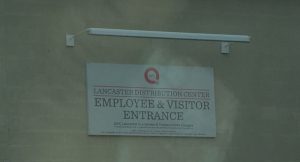
Photo by Kayla Rishell
From the offices to inside the manufacturing facility, any and all things that can be recycled are at the QVC Lancaster distribution center. Every single department recycles, reuses, and reduces where they can from:
- Returns Processing
- Bin Storage
- Print Room
- Packing Area
- Inventory
- Receiving Area
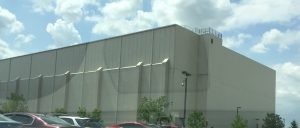
Photo by Kayla Rishell
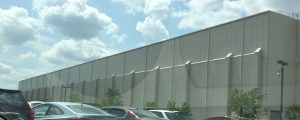
Photo by Kayla Rishell
Any machinery that is not being used is powered down completely, everything is unplugged. If there are any dead batteries in any of the handheld scanners they are recharged and used again.
In front of the distribution center, there is a QVC store for their employees where they re-sell returned products that cannot be sold at full price. This helps because product is not thrown out; it reduces the amount of trash.
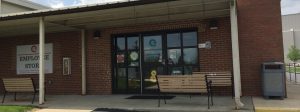
Photo by Kayla Rishell
In the print room they use recycled paper. If one of the ink cartridges runs out of ink, the empty container is sent back to the company and refilled and returned to be re-used.
They re-use plastic totes that are used when they pick orders in bin storage. The bins that they put the new products in are also re-used. A packaging bag is sent along to the customer incase they need to return the product, they can simply re-use the bag.
Any product returned that can be recycled is, from clothes to perfumes. Even the containers the makeup comes in are recycled. If a customer returns shoes, they keep the shoe box incase they might need it to store something. Everything is separated.
Employees are encouraged to commute together to work, if they do they are awarded with a close parking spot near the building. This is a nice incentive being that the parking lot is big.
When the trucks come in to pick up orders, returns, or product that needs to be put into inventory they have to shut off their engine. They cant leave it idle. When orders are shipped they are sent the most economical way to use less gas.

Photo by Kayla Rishell
In the cafeteria, the offices, and the meeting rooms if there is no one in there the lights will automatically dim to save on electricity.
Employees punch in and punch out on a computer, removing the use of paper. Changes that employees need to make with any type of information, like a change of address or a phone number, can all be done on the computer. The schedule is not even printed out, it is put on the computer to eliminate the use of paper. If customers live in the area they can drop off their return instead of using a cardboard box to ship it back.
QVC re-uses color coded index cards that show the day of the week to put a certain product away in the correct order. They also use recycled paper for printing pack slips. Cardboard is baled, which means it is stacked and compressed together to make it into a big bundle to be recycled.
All throughout the facility there are places to recycle bottles. When new inventory comes in it is shrink wrapped in plastic, the plastic is cut off and recycled.
Wooden skids are also reused. When handling certain objects, like the wooden skids, employees wear a pair of protective gloves that they can re-use over and over again until they get worn and then they get recycled.
QVC is also a smoke free facility. They support their employees to stop smoking. They have programs to help them quit and are awarded if they do. Employees are also rewarded with a gift card if they come up with new ideas on how to be more eco-friendly.
Recycling Baled Cardboard
At QVC, baling cardboard is a full time position for at least two employees. They bale the cardboard from all departments: returns processing, bin storage, the print room, the packing area, the shipping area, the inventory, the receiving, the offices, and the cafeteria. Collecting the separated plastic from all departments is also a full time position. Not only do they collect all the plastic from the departments, they collect soda bottles and cans from recycling bins that are located all throughout the facility. If someone accidentally mixes the trash with the plastic they sort it to make sure it is just plastic. This shows their dedication and the huge amount of recycling the Lancaster distribution center does.
Incentives for Sustainability
The incentives that QVC gives their employees not only makes it a safer work environment, but makes it a more eco-friendly work environment. By not letting employees smoke on QVC property at all, not only are they helping by reducing the pollution from smoke, they are helping their employees kick the habit and live healthier lives with various programs they offer. If an employee is a non smoker, they get cheaper medical benefits and additional pay on their pay check throughout the year. If they are caught smoking inside or outside on QVC property, it is an automatic termination. This shows how serious QVC is with enforcing their policies.
Trash in America
Americans make around 258 million tons of municipal solid waste every year. As of now, 34.6% is recycled and 12.8% is used for energy production. Municipal solid waste are things like product packaging, grass clippings, furniture, clothing, bottles, food waste, newspapers, appliances, paint, and batteries. A pervious peak was in 2007 when Americans generated 255 million tons of trash. A typical American makes 4.4 pounds of garbage everyday.
To help change the way the world thinks about waste, everyone must come together and make an attempt:
- Consumers
- Producers
- Policymakers
- Local Authorities
- Waste Treatment Facilities
- And more
References
- “Corporate Responsibility.” QVC, 21 Mar. 2018, corporate.qvc.com/lp/corporate-responsibility/.
- “Environmental Awareness.” Environmental Awareness – About QVC, www.qvc.com/AboutQVCEnviron.content.html.
- “QVC Fact Sheet.” QVC, corporate.qvc.com/newsroom/happenings/qvc-fact-sheet/.
- “Solid Waste.” ASCE’s 2017 Infrastructure Report Card, American Society of Civil Engineers, www.infrastructurereportcard.org/cat-item/solid-waste/.
- Former QVC Distribution Center Employee
